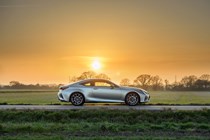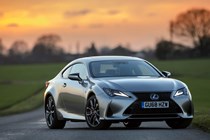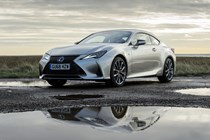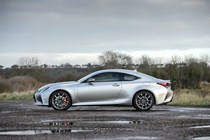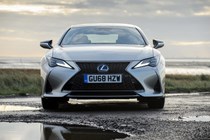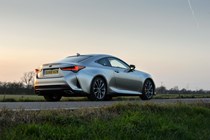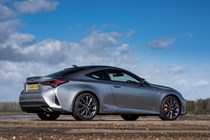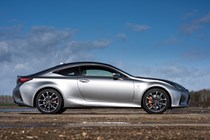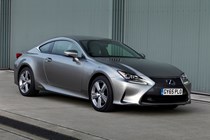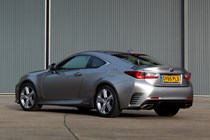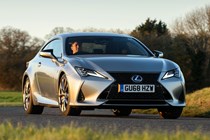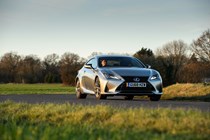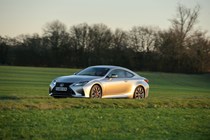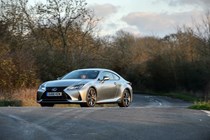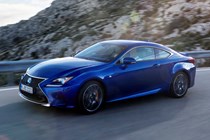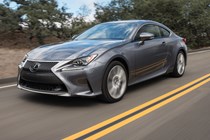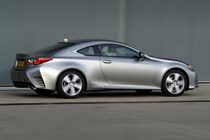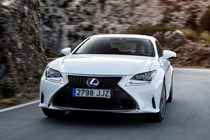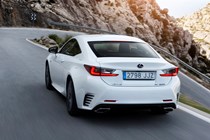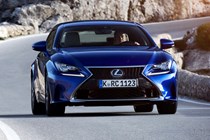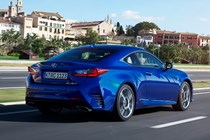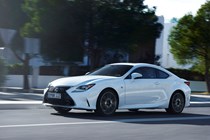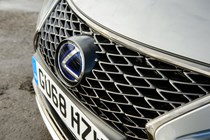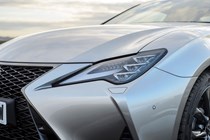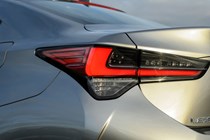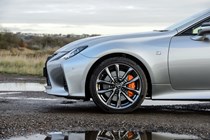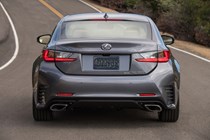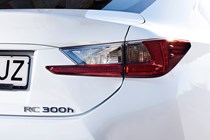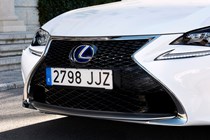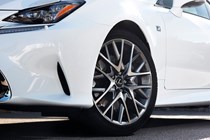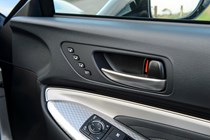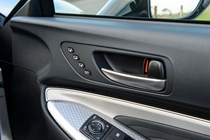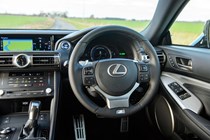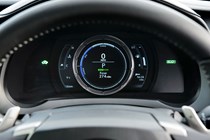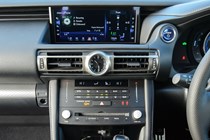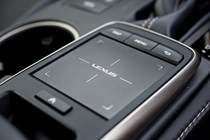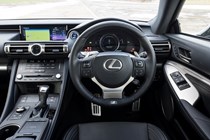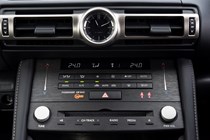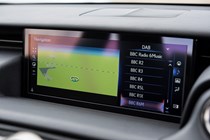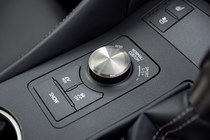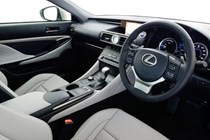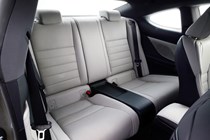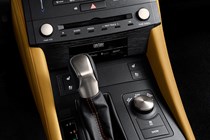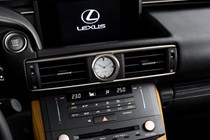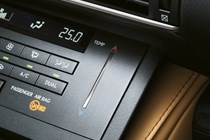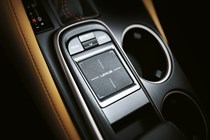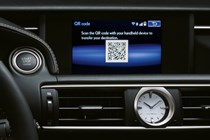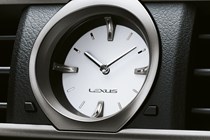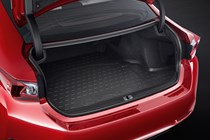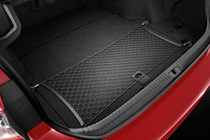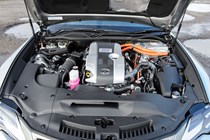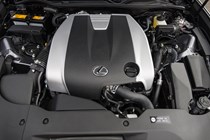
Lexus RC Coupe (2015-2020) running costs and reliability
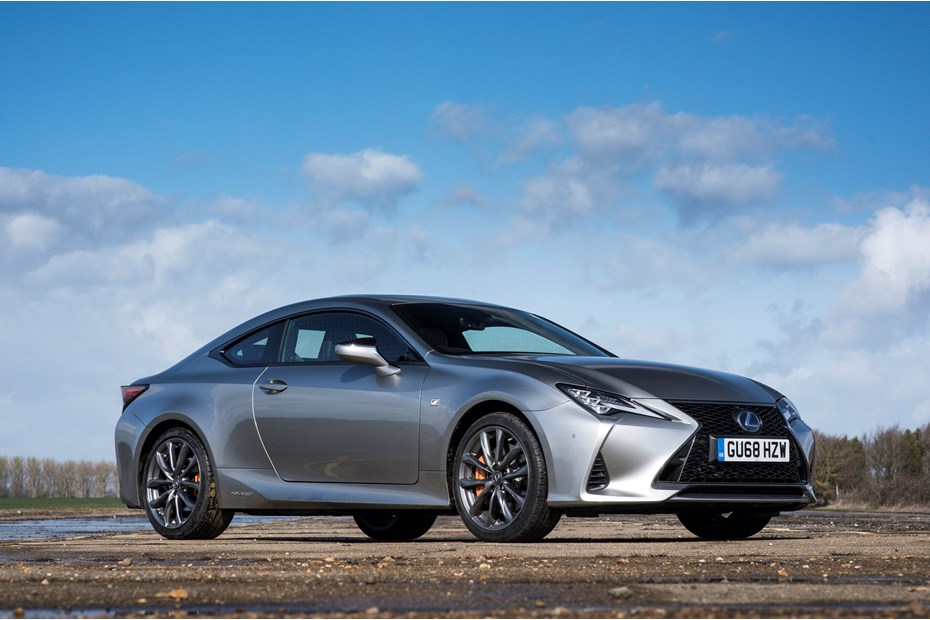
Miles per pound (mpp) ⓘ
| Petrol engines | 3.5 mpp |
|---|---|
| Hybrid petrol engines | 6.0 - 6.7 mpp |
Fuel economy ⓘ
| Petrol engines | 23.9 mpg |
|---|---|
| Hybrid petrol engines | 40.9 - 45.5 mpg |
If reducing your outgoings is your primary concern then opt for the hybrid version to minimise Lexus RC running costs. With no diesel variant to extend the gap between visits to the filling station, the RC 300h is the most frugal according to the official claims.
Riding on 18-inch wheels, the entry-level RC 300h boasts a quoted 57.6mpg, compared with 56.5mpg for the other hybrid versions wearing larger 19-inch rims. Those numbers are significantly better than the 38.7mpg claim for the turbocharged RC 200t, pitched as the sportier member of the range.
It’s a similar story with VED car tax, which is directly influenced by the RC’s CO2 emissions. That most frugal 300h derivative emits just 113g/km, while the larger-wheeled variants are slightly higher at 116g/km. All 200t versions post a 168g/km figure.
Lexus RC F: V8 power means higher running costs
Any car that pumps out 252g/km of CO2 and only returns 26.2mpg on the official combined cycle isn’t going to be the cheapest to run. Especially when in our experience of the vehicle that economy figure was far closer to 16mpg than 26mpg when driving the car as its Japanese engineers intended.
Large 19-inch tyres, huge six- and four-piston brake callipers requiring gigantic brake pads and 380mm or 345mm (the latter on the rear) brake discs mean consumables aren’t going to be cheap either.
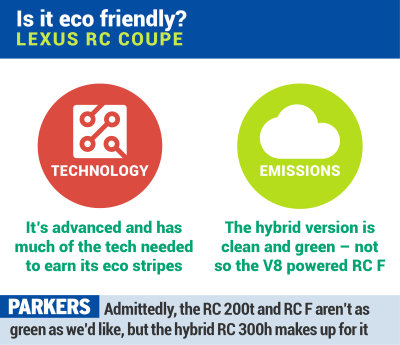
For the lowest Lexus RC emissions you need to concentrate on the entry-level model of the range – the standard 300h. With its 18-inch wheels CO2 is rated at just 113g/km, while the F Sport and Premier versions, riding on 19-inchers, are slightly higher at 116g/km.
There are only two powertrains to choose between in the RC line-up so it’s no surprise to learn that the non-hybrid 200t models have the least green emissions at 168g/km CO2.
You don’t choose an RC F to be kind to the environment as emissions are provided by a 5.0-litre naturally aspirated V8 petrol. That means this super-coupe pumps out 252g/km of CO2.
To be fair to Lexus, it has attempted to lessen the blow to both the environment by developing the engine to run on the more fuel-efficient Atkinson cycle at constant throttle and cruising speeds. It will revert to the more traditional Otto cycle when being driven hard though, providing optimum torque and power when required.
- Many components already seeing service elsewhere
- Lexus’s reliability record remains an enviable one
- Long history of producing hybrid powertrains
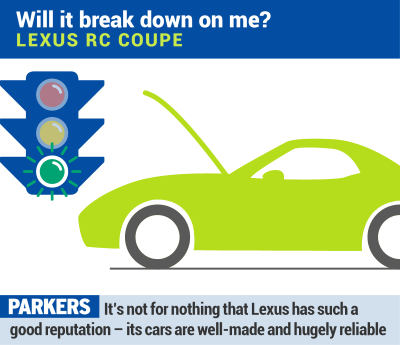
Lexus RC reliability is still a bit of an unknown, but we expect it to follow other models in the range with an exemplary record. Much of the mechanical and electronic hardware at the heart of the RC is shared with other cars in the range, and no significant concerns have been raised there.
While some RC buyers will be choosing a hybrid for the first time, the technology is no longer new – even within the UK Toyota, Lexus’s parent company, has been selling hybrids since 2000.
And every Lexus is screwed together with the sort of solidity and precision that would shame a bank vault, so there’s no worry about errant pieces of loose trim or worn materials – a 10-year, 100,000-mile old example should look almost as good as the day it left the factory.
Ongoing running costs
| Road tax | £35 - £620 |
|---|---|
| Insurance group | 31 - 45 |
Get an insurance quote with

|
|




